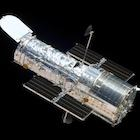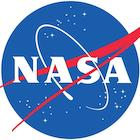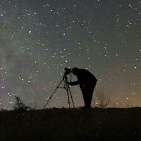Search results
Webb will gaze into the epoch when the very first stars and galaxies formed, over 13.5 billion years ago. Ultraviolet and visible light emitted by the very first luminous objects has been stretched or 'redshifted' by the universe's continual expansion and arrives today as infrared light.
Dec 25, 2021 · The James Webb Space Telescope is a giant leap forward in our quest to understand the Universe and our origins. Webb is examining every phase of cosmic history: from the first luminous glows after the Big Bang to the formation of galaxies, stars, and planets to the evolution of our own solar system.
The James Webb Space Telescope (JWST) is a space telescope designed to conduct infrared astronomy. Its high-resolution and high-sensitivity instruments allow it to view objects too old, distant, or faint for the Hubble Space Telescope.
Discover the science mission of NASA’s James Webb Space Telescope (JWST), from exoplanet atmospheres to the first light in the universe—and more!
See current, upcoming and recent past observations scientists are making with the Webb Space Telescope. View details about each observation's science focus areas, the instruments used and more. View the Tool
The James Webb Space Telescope (sometimes called Webb or JWST) is a large infrared telescope with a 6.5-meter primary mirror. Webb is the premier observatory of the next decade, serving thousands of astronomers worldwide.
Jul 12, 2022 · NASA revealed the first five full-color images and spectrographic data from the world’s most powerful space telescope, the James Webb Space Telescope, a partnership with ESA (European Space Agency), and CSA (Canadian Space Agency).
Jul 12, 2022 · The first images and spectroscopic data from NASA’s James Webb Space Telescope have revealed unprecedented and detailed views of the universe. Webb’s first images and spectra, including downloadable files, can be found at https://webbtelescope.org/news/first-images .
Nov 20, 2023 · The NIRCam (Near-Infrared Camera) instrument on NASA’s James Webb Space Telescope’s reveals a portion of the Milky Way’s dense core in a new light. An estimated 500,000 stars shine in this image of the Sagittarius C (Sgr C) region, along with some as-yet unidentified features.
A brief overview of the James Webb Space Telescope mission from its construction, launch, and complex unfolding, to the incredible science it achieves. Credit: NASA's Goddard Space Flight Center Producer: Michael McClare (KBRwyle)






